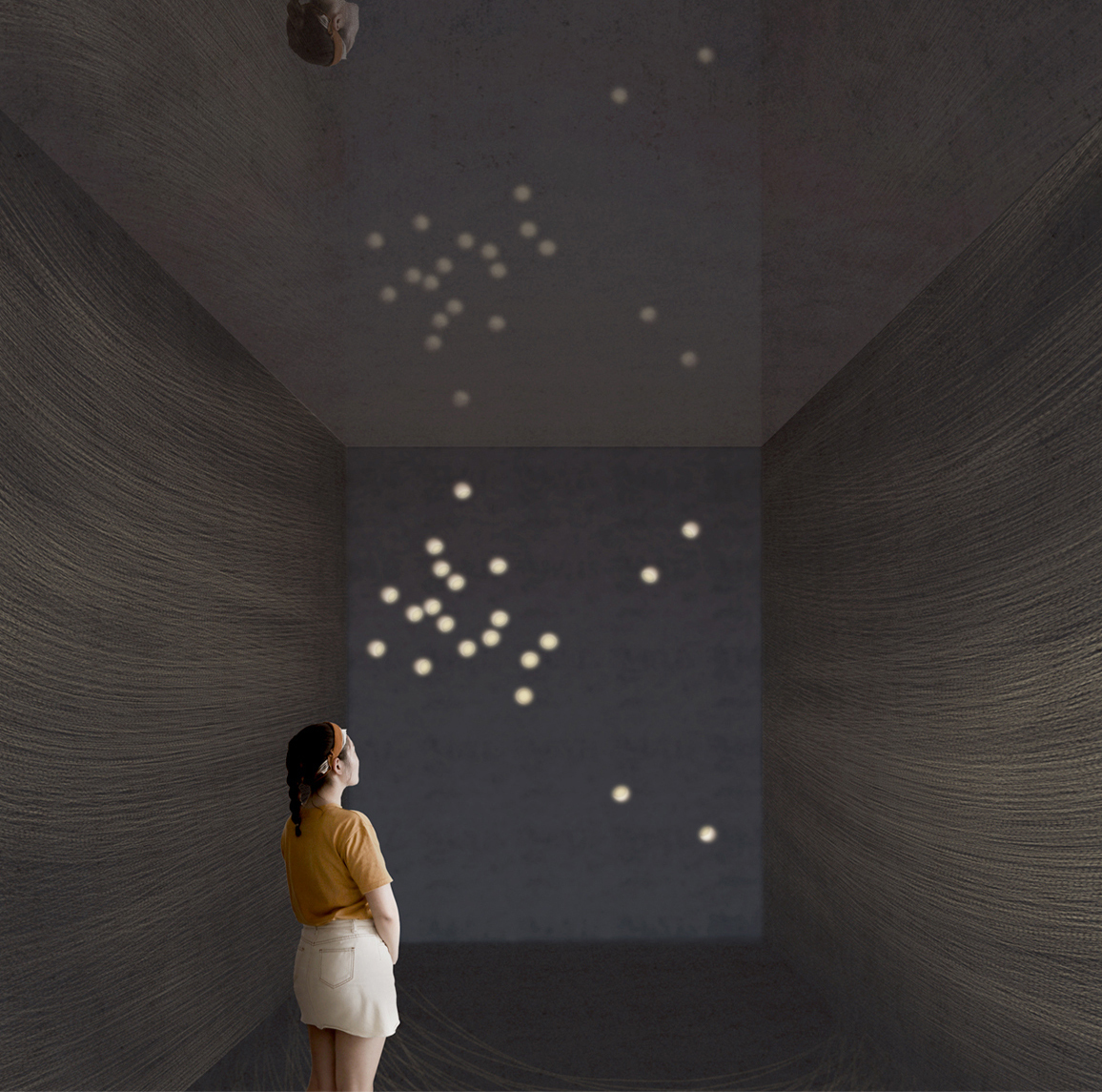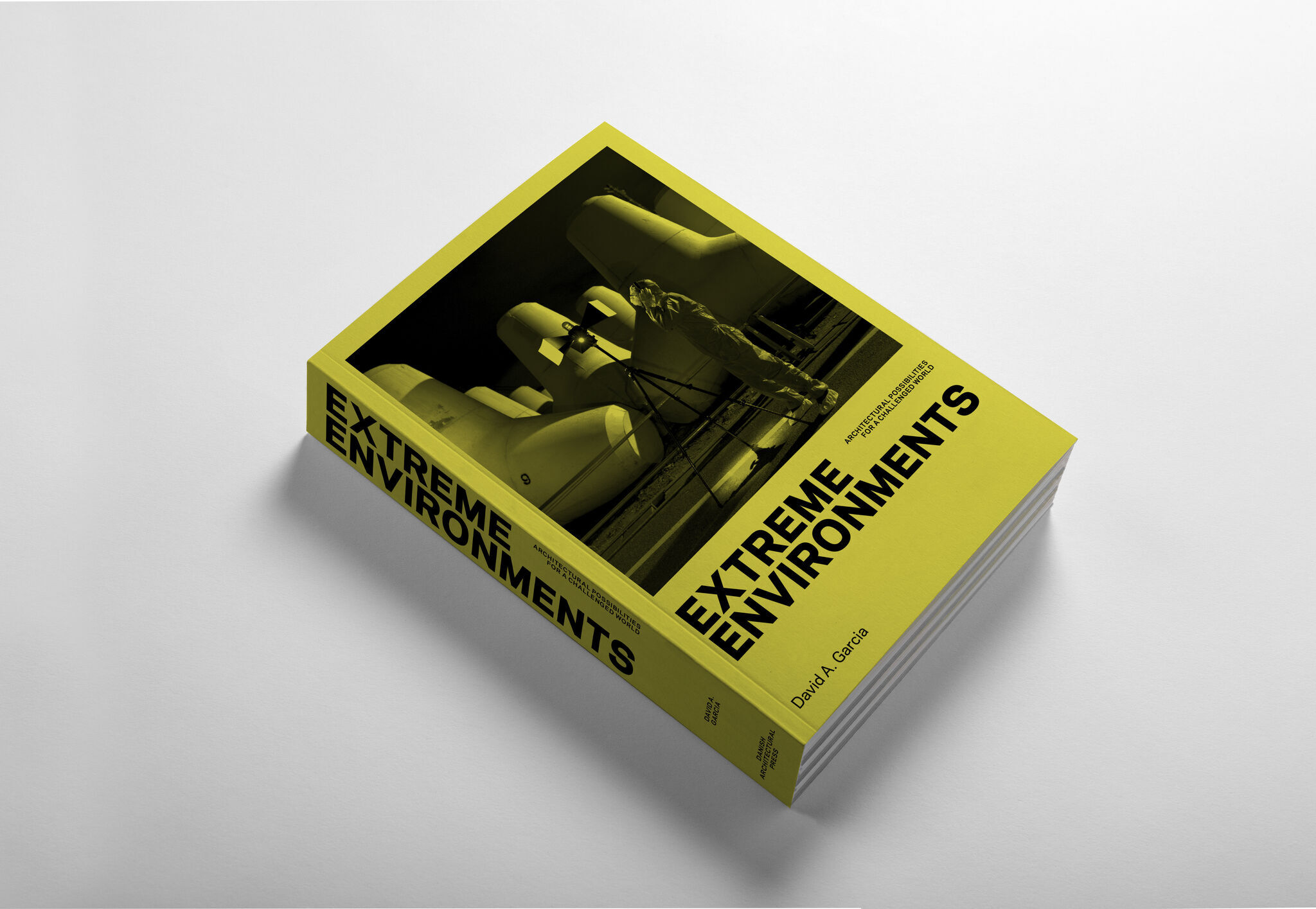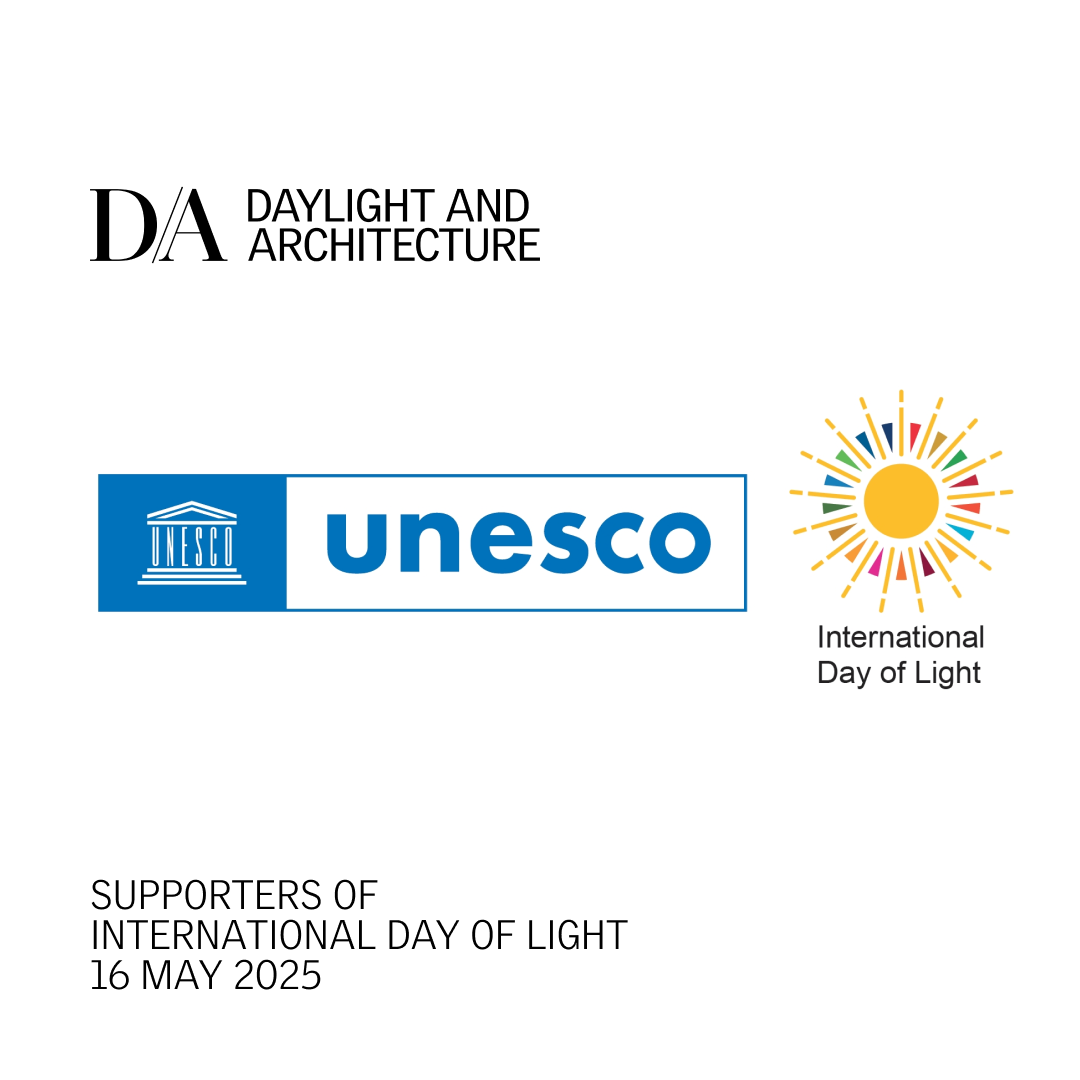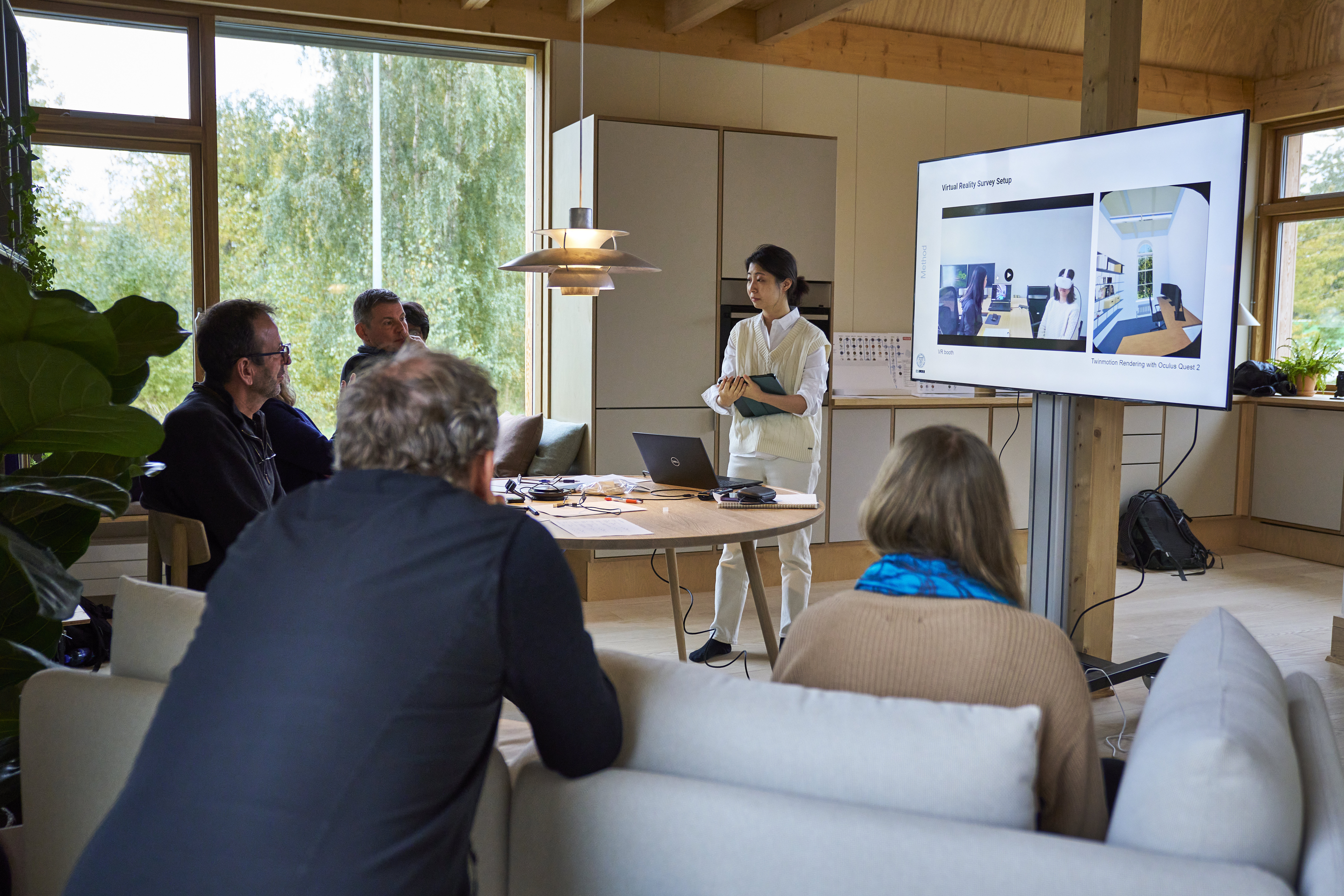Making Room for Remembrance
- Meet the Winners from Asia and Oceania Daylight in Buildings

Peilin Yin, Qi Wang and Jingkai Chen with their teacher, Xuechuan Geng (second from right).
“Our inspiration came from Corbusier’s Star Church in France,” Qi Wang reveals about the background for their daylight project ‘My Dead Relative in the Light’.
Their winning project explores how to retain the tradition of worshipping ancestors in future megastructures of cities with a scarcity of land. It suggests building gravestone brick walls in the bottom space of a high-rise public building. When sunlight passes through holes in the exterior walls, each gravestone brick will be illuminated at a specific time of the day of death − following the calculated incident angle of the sun over the course of the day and seasons.
The church of Saint-Pierre in Firminy-Vert in France by Le Corbusier Source: Richard Weil (lapin.lapin)/Kamalpassi2102
“We are fascinated by the magical effect of light, and we feel that this is the ideal space for our dialogue in time and space, so these three sequences have been extended. The change of light, the touch of mobile phone keys, the sensory experience brought by touch, and the atmosphere of Corbusier’s church inspire us to create the three spaces,” says Jingkai Chen.
Emotional moment
Finishing the third year of their degree in architecture, the students were in the middle of preparing for their exams when they got the good news; They had won the category of Daylight in Buildings for Asia and Oceania and would be given a ticket to Amsterdam and the World Architecture Festival to present their project in front of the jury and compete for the title of Global winner and €5 000.
“We had just finished a test and were preparing for the next exam when my partner came to tell me the good news. I could not believe it, it was an emotional moment,” says Jingkai, who also expresses excitement about the upcoming finale. “We would like to seize this rare opportunity to discuss our work with the judges. In fact, I am also very interested in what other students think of our plan.”
Poetic remembrance
Dealing with sensitive topic like mourning and remembrance, Qi, Jingkai and Peilin have reflected on the effects that light can have on your mood and emotions and highlights the spiritual nature of daylight in their work.
“In addition to the basic physical functions of light, I still feel that mental function will play a greater role. This is also the original intention of our work,” says Qi.
“We think that light can not only satisfy people’s physiological needs, but also in the near future, bring emotional resonance as a work of art. We just feel the feelings of the missing loved one, and hope to present an art work to resonate and reflect on the problem and even find a better solution to it,” says Peilin and adds that the design also brings an element of sustainability to the building.
“The light will participate in more green activities, and become the raw materials or media for some low energy and low emission construction projects, giving more vitality to the building.”
This interpretation of daylighting design resonated with the jury, who called the project beautiful and moving in the final report from the meeting. The jury described the project saying:
“The poetics of remembrance with a touching connection to the soul of the person who is deceased is a celebration of daylight, and teaches people to understand the position of the sun at all times, so that they know when to go to the wall gravesite and to understand that every day is different.”
Limitless charm of light
The category Daylight in Buildings encourages the students to explore daylight by addressing “challenges faced by cities, communities and modern societies, and where daylight and architecture can help create change through better and healthier living environments”.
The winning team from Asia and Oceania interpreted this criteria by focusing on the emotional comfort of the space they want to create.
“This emotional space is divided into three sequences, corresponding to the beginning, development and climax of emotional catharsis. We hope that every person who comes here can achieve a dialogue between the two worlds that breaks through the limitations of time and space, thus reaching the greatest level of emotional comfort,” says Qi.
“Light is full of limitless charm. It has numerous kinds of possibilities, ways of application and unexpected results. The same is true of the building. The combination of light and architecture excited me and wanted to explore more sparks of light and architecture.”
Explore “My dead relative in the light” and all the other regional winners here.



